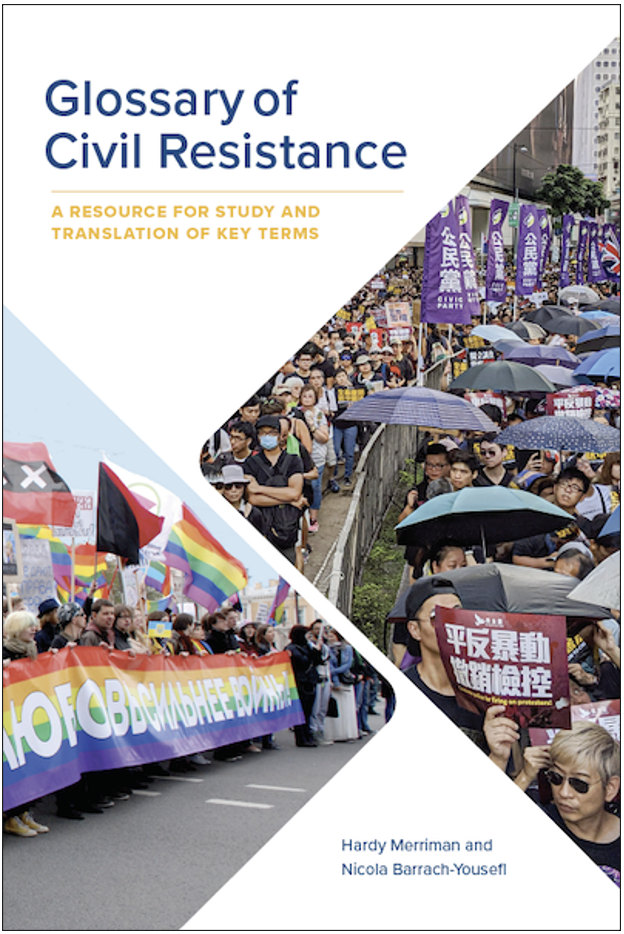Minds of the Movement
An ICNC blog on the people and power of civil resistance
by ICNCFebruary 24, 2021
English language terminology in the field of civil resistance is like a garden of wildflowers, shaped by sometimes competing forces.
On the one hand, the garden reflects locally rooted ideas and cultures: vibrant, natural, and defying simple efforts to constrain it. It’s an outgrowth of various micro-climates. Over time, some flowers (key terms) get more sunlight than others. New flowers also emerge, brought in on the wind from elsewhere. The garden evolves, as does the soil from which it grows.
As a reflection of diverse human culture, one could say this garden is best left untended, to develop according to its own course. But periodically good attempts are made to organize it and precisely define the elements of its ecosystem. These efforts are also in keeping with the purpose of the field. In civil resistance, strategy matters, and planning civil resistance is both an art and a science. We value the dynamic and localized forces that cause civil resistance to develop over time, and we take stock of and clarify language to foster communication about ideas and insights, which supports effective strategy.
 Based on years of efforts to share and translate knowledge of civil resistance into other languages, Nicola Barrach-Yousefi and I wrote the just-published Glossary of Civil Resistance. It’s our snapshot of the evolution, current state, and implications of terminology in the field.
Based on years of efforts to share and translate knowledge of civil resistance into other languages, Nicola Barrach-Yousefi and I wrote the just-published Glossary of Civil Resistance. It’s our snapshot of the evolution, current state, and implications of terminology in the field.
This project started in 2015 with a list of 55 key terms. At the time we aimed only to produce an internal document to support ICNC’s translations program. Translators face an array of challenges in their work on civil resistance, ranging from the fact that it is sometimes necessary to develop new terms in a particular language (just as Mohandas Gandhi created terminology in English a century ago), to the fact that English-language terms themselves can be confusing (even native English speakers find this, and it can be even more confusing to translate them). Overarching this is a third challenge, which is that the field of civil resistance tends to contradict common assumptions about how conflict and power function. This further causes translators to have to distinguish civil resistance content from other conventional political terminology.
Over time our project grew from an internal list of 55 key terms into a book consisting of over 150. Definitions were added and expanded, as were commentary, examples of usage, and lists of related terminology. There were moments when it felt as if the project had no end—trying to map and describe even a portion of this field is to encounter a range of relationships and subtlety that does not have simple borders.
With nearly six years of effort, we are confident that the final product is a valuable tool for translators, who do incredibly important and often under-recognized work in this field. Non-translators will also find it of interest, as a great deal can be learned from the concepts that underlie each term.
In addition, we’ve already tested it—consistent with our original purpose, we started distributing drafts of the glossary with translators early on as it was under development. Standardized translations of some or all of the glossary’s key terms are now available in:
We see these lists of translated key terms, and the glossary itself, as a starting point of reference. In many cases, there are multiple viable options to translate a key term, and translators must always apply their best judgment.
We also encourage people internationally to develop glossaries for their particular languages, which can aid translations into English. In a field that draws from global practice and scholarship, conversations and lessons learned should be shared in multiple directions.
The tamed and manicured garden of well-functioning institutional politics has its place. The wildflower garden of civil resistance—pushing boundaries, filling cracks, adapting to and shaping the natural landscape—has its place too. In fact, it’s needed now more than at any point in recent decades. The field keeps growing. Acknowledging this, our goal is to deepen understanding and communication about the powerful, natural, and intentional phenomenon that we’re looking at, so movements can better share and apply lessons learned as they fight for rights, freedom, and justice.